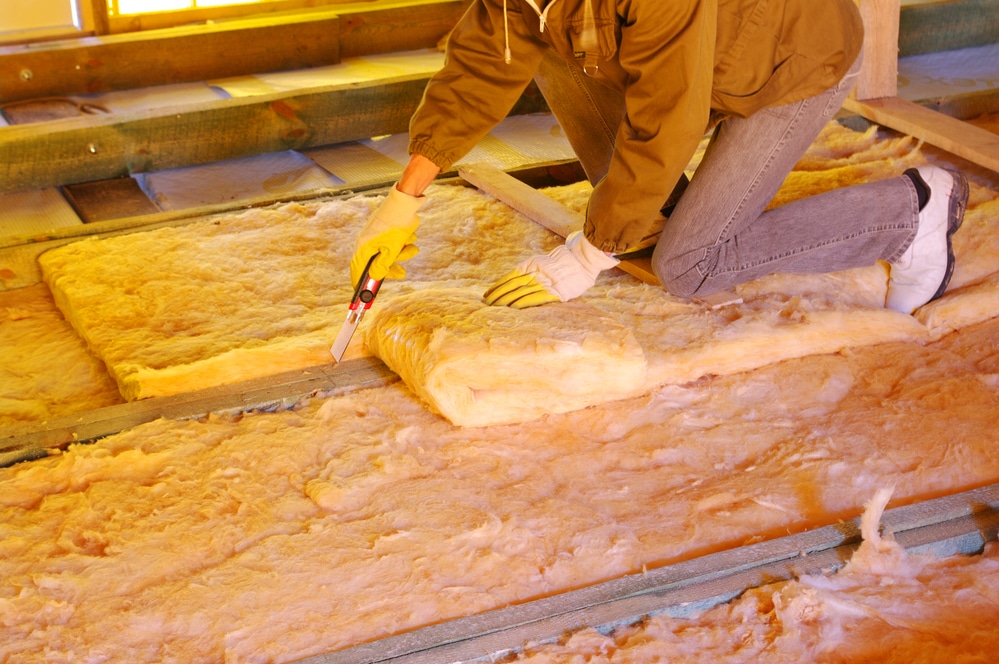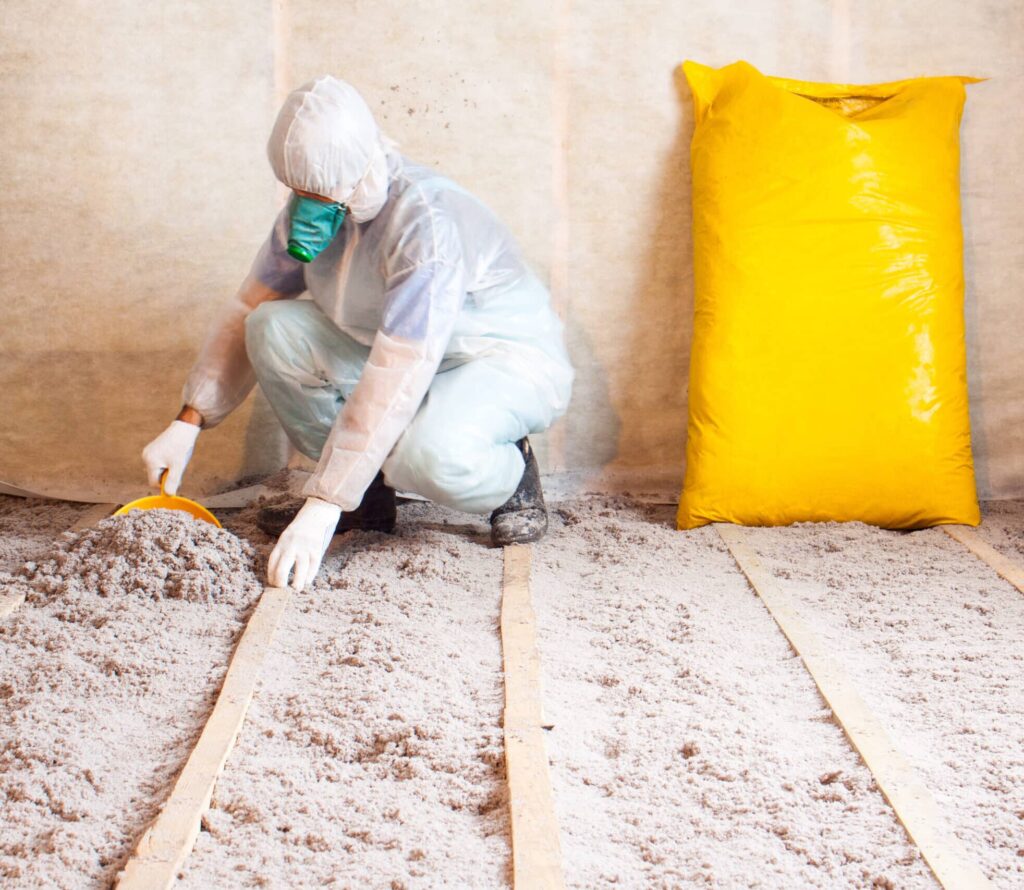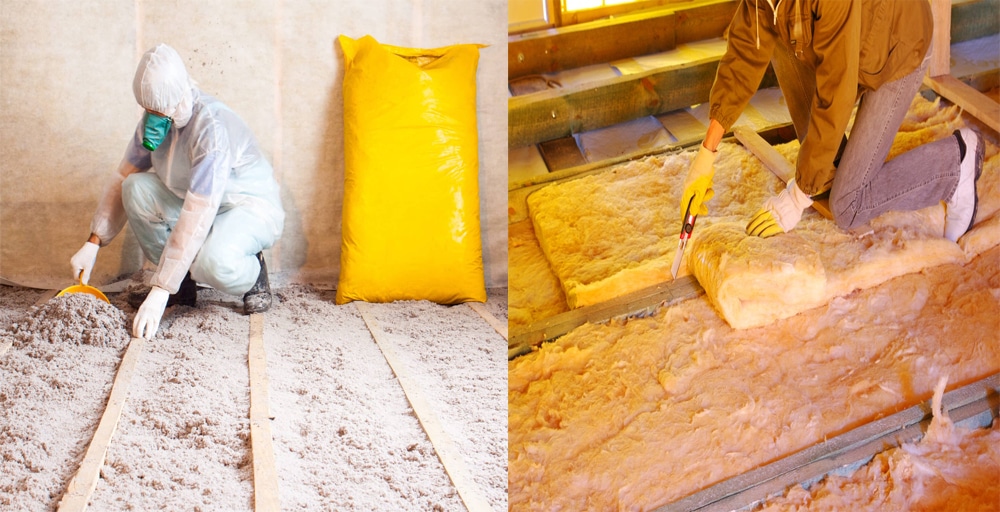If your home’s construction occurred within or after the late 1970s, the material you see seeping out from your attic walls is most likely non-toxic. After Congress passed the 1976 Toxic Substances Control Act, the EPA swapped out asbestos and other harmful building products for materials like cellulose that don’t jeopardize human health or the environment.
However, can you guarantee asbestos hasn’t made its way into your later-built home, and for historic homes, should you worry? Breaking down these questions starts with first understanding how to tell the difference between cellulose and asbestos insulation. With years of experience, Attic Project’s in-house team identifies these products instantly and can get you there, too, with their in-depth analysis of both below.
What Is Asbestos Insulation?
Surprisingly, asbestos is a natural, fibrous elemental mineral rather than a man-made chemical that construction workers have used since the early 1950s. From mixing into other products like shingles, paint, and cement to filling ductwork and attic walls, asbestos had a stagnant place in residential and commercial estates, alongside ships and other structural builds, for about 40 years.

Advantages of Asbestos Insulation
Although asbestos has its alarming factors, which we’ll get into later, it took center stage for so long due to several reasons. The soft heat-resistant mineral, especially from the Amphibole category, including Amosite and Crocidolite, has high fire-retardant powers with non-flammable and non-combustible properties. Most types remain unaltered in temps up to 1,600 degrees Fahrenheit, proving durable.
The material’s flexibility allows you to squeeze it into tight spaces with few air pockets alongside its high thermal insulation capacity; you wouldn’t have to worry as much about thin interior or exterior walls. The asbestos keeps your controlled indoor climate from seeping out of your home and harsh outdoor temperatures from finding their way inside.
Other asbestos advantages when considering cellulose vs. asbestos include the following:
- Weatherproof properties keep the asbestos safe, even if exterior walls have cracks or holes, letting in rain and other natural elements.
- Cost-effectiveness makes it the more economical choice for insulation.
- As opposed to cellulose insulation, asbestos is easier to maintain in your home.
Disadvantages of Asbestos Insulation
Since asbestos doesn’t pose a threat unless your walls or ceilings expose you to it, the main floors of your home or commercial property usually prove safe for you, your loved ones, and visitors. However, attic walls become the prime suspect when insulation begins seeping into your home, affecting the air everyone breathes.
When asbestos begins doing so, the microscopic fibers enter your body effortlessly, and your body finds it difficult to break down or dispose of the particles. From ovarian and lung cancer to genetic cell damage, loose or crumbling asbestos proves extremely hazardous to anyone after prolonged exposure.
What Is Cellulose Insulation?
Continuing on our mission of how to tell the difference between cellulose and asbestos insulation, let’s take a closer look at the former. After the 1976 Act, cellulose rapidly became the common substitute for asbestos, taking on two popular forms according to your wall’s needs. Contractors spray dry or loose-fill cellulose into wall cavities, while compact wet cellulose creates a strong, tight seal in new walls.

Advantages of Cellulose Insulation
Cellulose not only makes the healthier choice for insulation with its low VOC levels but also becomes the greener alternative to asbestos since the mix comprises 85% recycled materials like paper and cardboard. It also contains straw, cut-up newspapers, hemp, and other natural materials that would end up in landfills under different circumstances.
The dense material, especially if you go with wet cellulose, produces a thick barrier within your walls that creates a soundproof barrier from noises outside. It also increases your freedom, allowing you to throw parties, play instruments, and conduct other loud activities without worrying about disturbing your neighbors.
Disadvantages of Cellulose Insulation
Unfortunately, unlike asbestos, cellulose insulation does not have the same fire-retardant properties since it comprises natural and flammable materials like paper and dry straw. Therefore, your construction contractor should douse it in boric acid, derived from a white boron powder, to prevent a fire hazard.
Another disadvantage of this natural mix when considering cellulose insulation vs. asbestos stems from its permeability. The mostly paper makeup of the material quickly absorbs water from leaky walls and ceilings, prematurely deteriorating and leading to other concerns like mold and mildew growth within your home’s structure.
The Differences Between Asbestos and Cellulose Insulation
But what does cellulose insulation look like compared to asbestos? The best way to answer “how to tell the difference between cellulose and asbestos insulation” is by going into your attic and looking at your unfinished walls. Although they may look similar to the naked eye, observe the filling closely without touching it to notice the color, texture, and form.
Loose-fill asbestos usually appears fluffy or lumpy, while other forms like vermiculite resemble smaller pebbles once heated with the same grey-brown or silvery-gold colors. Other asbestos types have blue, white, brown, or black hues, while cellulose insulation usually looks pastel yellow, gray, or tan with a fibrous or shredded paper texture.
Frequently Asked Questions (FAQs)—Asbestos vs. Cellulose Insulation
Whether you have asbestos or cellulose, you probably have plenty of questions about your home, including the following.
How much Asbestos is too much?
While we suggest trading in all asbestos for cellulose filling, asbestos only becomes daunting if particles become loose, spreading around your attic, or over 10 square feet of this material span your home.
When did Cellulose Insulation begin?
Cellulose insulation came out around the same time as asbestos, formally beginning in the 1950s. However, cellulose rapidly became more popular in the mid-1970s, especially since it proved more environmentally friendly and safe after the 1976 Act.
Conclusion
If you don’t know how to tell the difference between cellulose and asbestos insulation, call on our insured, bonded, and licensed five-star team at Attic Projects. Contact us today and we’ll schedule your free inspection and provide a custom estimate!




